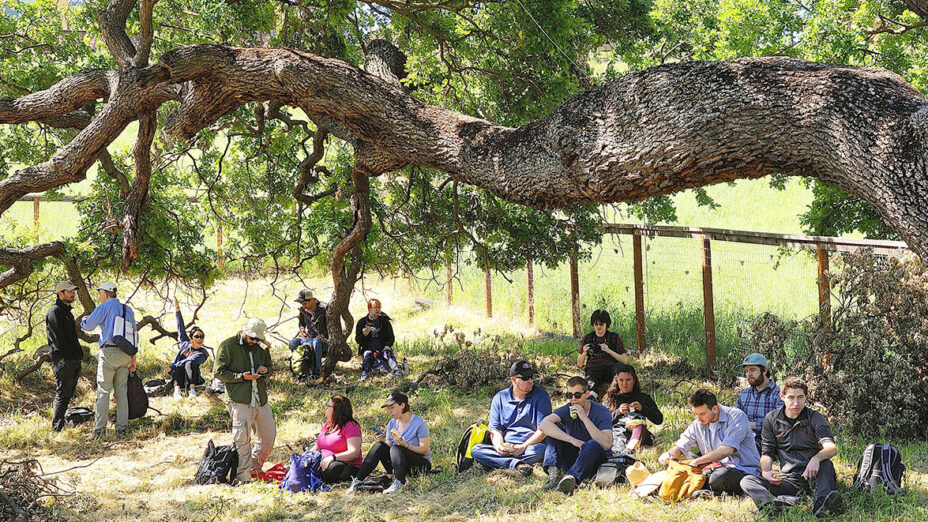
This spring semester, Save Mount Diablo Executive Director Ted Clement will be teaching a class at California State University, East Bay.
Ted Clement stated, “This is the fourth semester we have taught our land conservation course at California State University, East Bay. We are grateful for this opportunity to build the bench for land conservation at one of the most ethnically diverse universities in the United States.”
The course is entitled History of Land Conservation Nationally and in the Mount Diablo Area, the Original and Future Stewards, and Careers in the Field.

Professor Ted Clement gives the first lecture of the semester.
Each week will cover a different topic related to land conservation and its history, starting with a lecture on the history and evolution of land conservation in the US given by Ted.
Many of the units will feature guest lecturers who have done significant work in the field of land conservation.
Week two will zoom in on the more than 50 years of Save Mount Diablo’s conservation work in the East Bay. Save Mount Diablo Land Conservation Director Seth Adams will lead this lecture.

The Concord Naval Weapons Station, where Save Mount Diablo has been successfully advocating for open space protections over the past 15 years. Photo by Stephen Joseph
Seth has worked for Save Mount Diablo for more than 35 years and has spent decades studying the history of the East Bay.
During week three, students will learn about the native peoples of Mount Diablo from guest lecturers Sean Burke and Robert Phelps, PhD, who are both Native American.
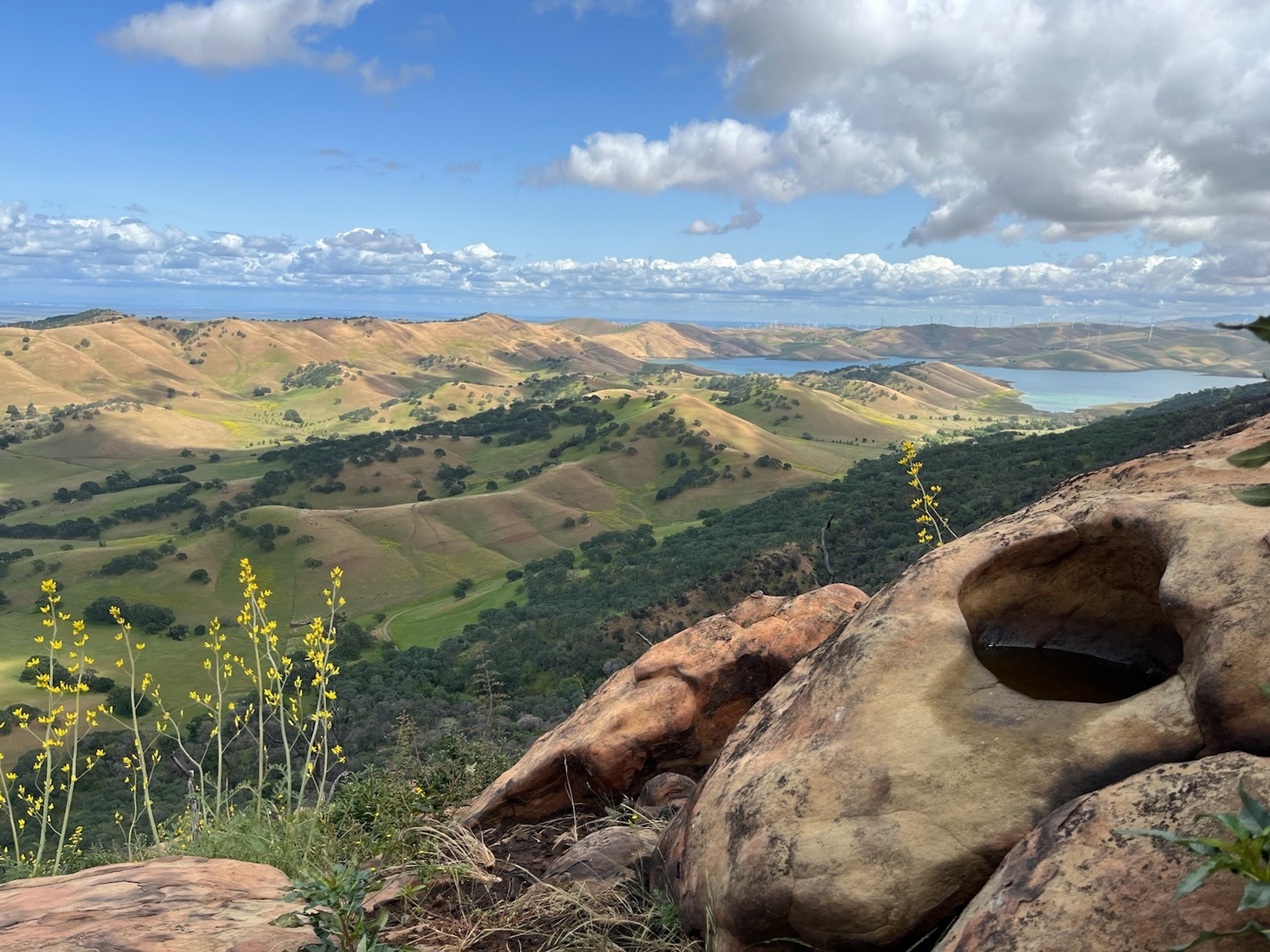
A Native American mortar stone. Photo by Sean Burke
Sean Burke is Land Programs Director for Save Mount Diablo, and Robert Phelps serves on Save Mount Diablo’s Board of Directors.
Sean Burke, Seth Adams, and Robert Phelps will return for future lectures covering the flora and fauna of Mount Diablo, along with the future of land stewardship.
The class will also feature a mid-semester field trip to one of Save Mount Diablo’s conserved properties, taking the students out to nature and giving them an on-the-ground demonstration of the importance of local conservation work.
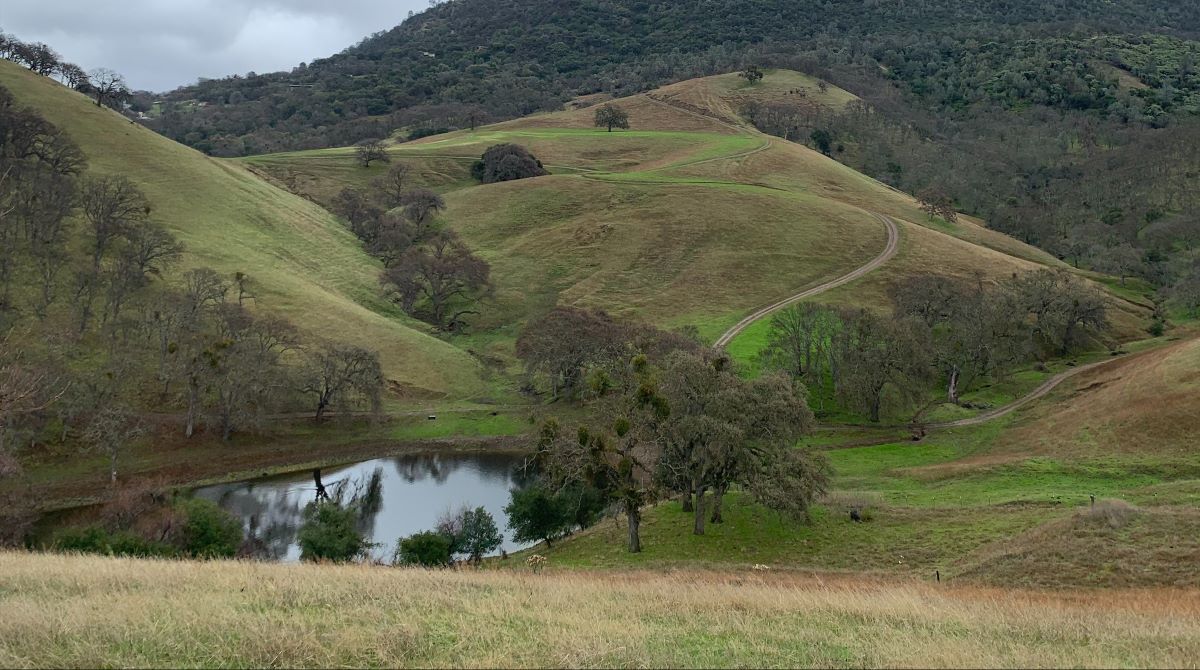
Krane Pond, one of Save Mount Diablo’s recently conserved properties. Photo by Haley Sutton
Ted and Robert Phelps will deliver a lecture focused on how we can use education to help get our younger generations deeply connected to, and educated about, nature.
Getting younger generations connected to nature is essential so that we can collectively move nature to the center of our cultural value system and do a better job addressing major environmental issues.
Later, Ted will provide a lecture about nonprofit land trusts and their best practices—and also a lecture on how young people can go about developing themselves and pursuing a career in land conservation.
By the end of this course, students will be able to do the following.
- Describe the basic history of land conservation nationally and in the Mount Diablo area as a dynamic process of needed change over time.
- Identify and appreciate the original native stewards of the Mount Diablo area, drawing connections to developing future stewards of our natural areas.
- Articulate a working definition of land trusts.
- Recognize, and know where to look for, various careers in the land conservation field.
- Identify the training and preparation necessary to pursue a career involving land trusts.
- Appreciate the unique flora and fauna of the Mount Diablo and Diablo Range areas and discuss what is required to help steward these resources.
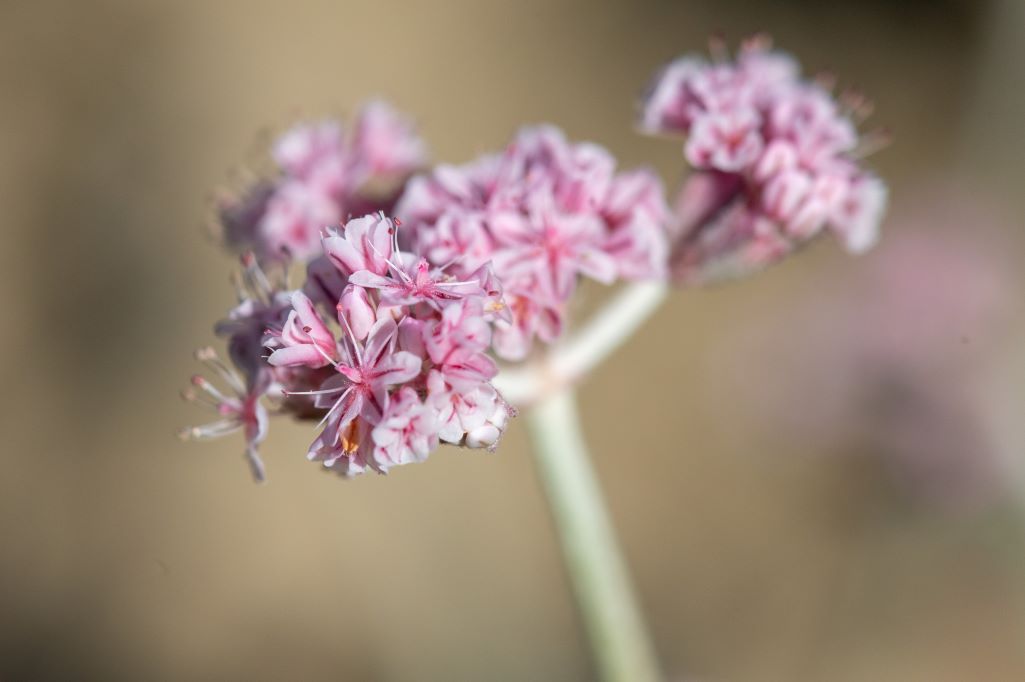
Mount Diablo buckwheat, a critically endangered flower that is endemic to the Mount Diablo region. Photo by Scott Hein
Each unit will give students practical knowledge on the topic of land conservation and its history, taught by people who have done the work for decades:
- Class One: History and Evolution of Land Conservation in the United States (Professor Ted Clement)
- Class Two: History of Save Mount Diablo (Guest Lecturer Seth Adams)
- Class Three: Native Peoples of Mount Diablo (Guest Lecturers Robert Phelps, PhD and Sean Burke)
- Class Four: The Flora of Mount Diablo and the Diablo Range (Guest Lecturer Sean Burke)
- Class Five: The Fauna of Mount Diablo and the Diablo Range (Guest Lecturer Seth Adams)
- Class Six: Establishing the Next Generation of Land Stewards (Professor Ted Clement and Guest Lecturer Robert Phelps, PhD)
- Class Seven: National Standards and Practices for Land Trusts (Professor Ted Clement)
- Class Eight: Careers in Land Conservation (Professor Ted Clement)
Our spring semester land conservation course recently started at California State University, East Bay and the students are already turning in inspiring homework assignments.
Consider this written reflection turned in by one of the students, Sara Andrade:
“We as humanity are a mere segment in the cycle of life here on Mother Earth, but just as any link in the pattern we have our role to play and contribute in order to keep the wheel turning.
On an individual level we often fall under the societal ideology that our mere presence alone could hardly contribute to the overall well-being of the planet, when the reality is quite the opposite and understanding our place in the cycle and how we can play our part may help to switch the current ideology we see in present day society.
We are not the first, nor the last to walk this mighty and precious planet and it is our due responsibility to not only protect mother earth but to continue to educate those around us in how they can do so as well.
From preservation of the land and its natural biodiversities and ecosystems to the development of renewable energy and accessibility to sustainable living we can each contribute to the growth of sustainability while maintaining and ensuring a safer, cleaner planet for ourselves and future inhabitants to come.
Our place in nature is to give back double what we take from Mother Earth, one to replace that which is taken and one to foster sustainability for the future.”
Inspiring the Next Generation of Conservationists
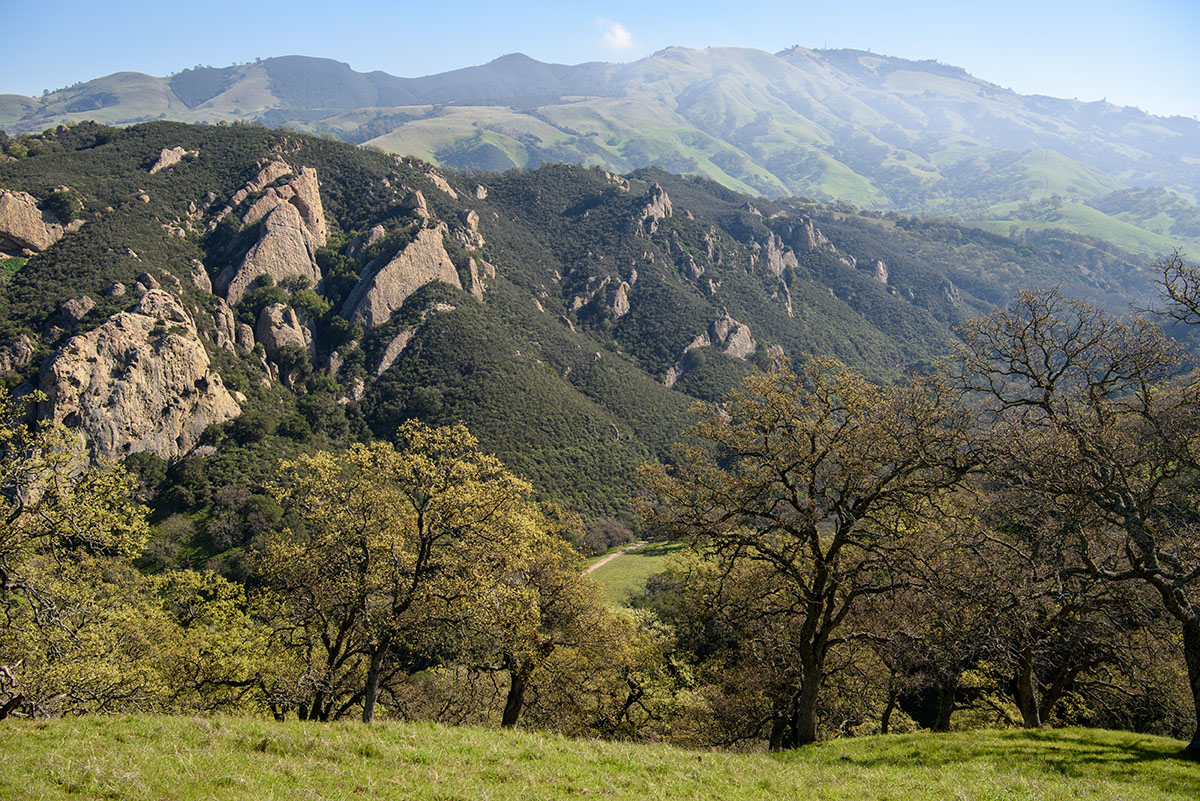
Castle Rock in the springtime. Photo by Scott Hein
Students are essential to the future of land conservation. We’re working to ensure that nature continues to be protected in the future by nurturing the next generation of conservationists and stewards of nature.
Teaching this class at CSU East Bay is one of the numerous ways that we’re working to connect the next generations with nature.
We’re also bring the next generation outdoors through our Conservation Collaboration Agreement program and our new pilot educational program aimed at third to fifth graders.
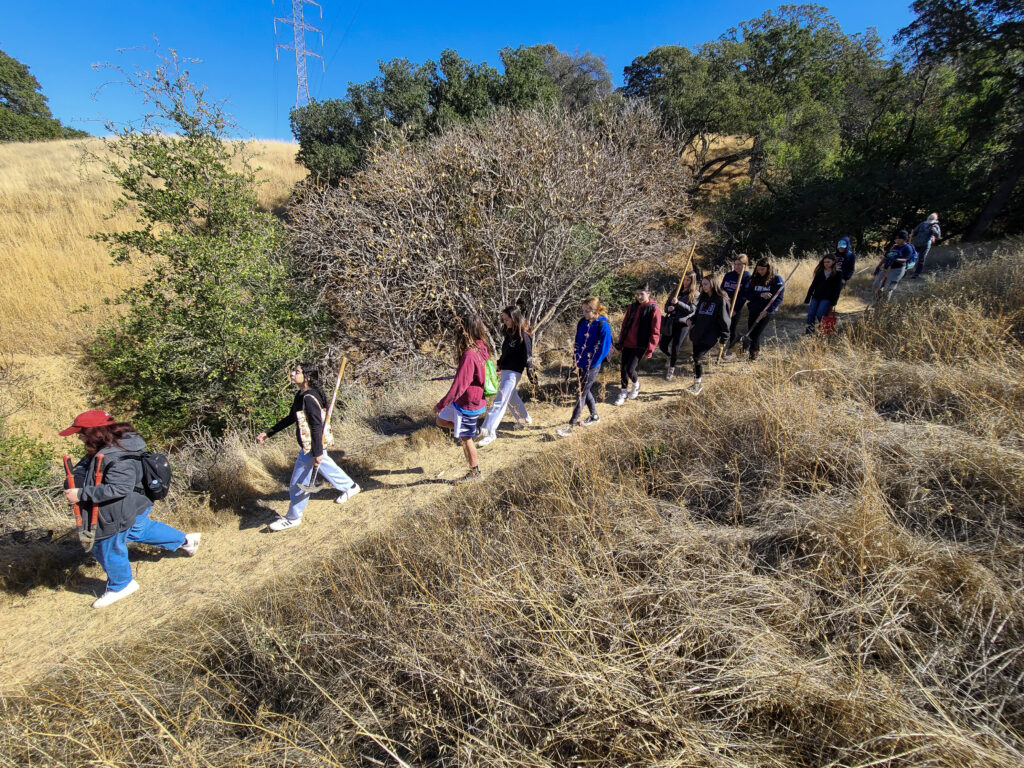
Campolindo High School students hiking to their service project site during a Conservation Collaboration Agreement program. Photo by Alexander Broom
We’re proud that CSU East Bay has asked us to teach this class for four semesters now. Young people are becoming more interested in conservation and in addressing the climate crisis.
We hope that this class will empower the next generation to protect and cherish our local open spaces and to build a better future for themselves and the planet.

